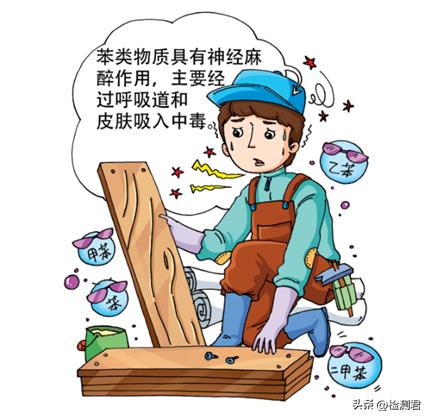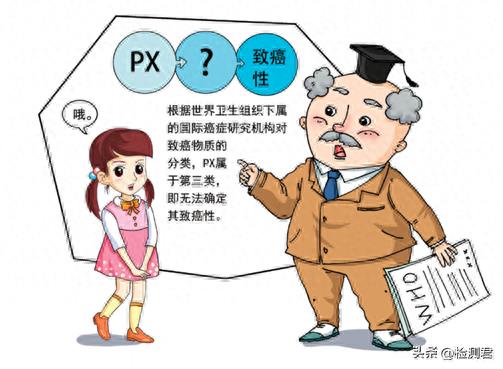Consumers in today's society pay more and more attention to the concept of environmental protection, and most consumers' definition of product quality has quietly changed. The intuitive perception of product 'smell' has also become one of the main indicators for consumers to evaluate product quality. Often consumers simply comment on a product such as: "When you open the package, there is a strong plastic smell, which is very pungent" or "When you open the shoe box, there is a strong smell of glue, and the product feels inferior". The impact is unbearable for many manufacturers. Smell is the most intuitive feeling of consumers. If relatively accurate quantification is required, we need to understand the concept of VOCs.
1. What are VOCs and their classification?
VOCs is the abbreviation of the English name "Volatile Organic Compounds" of volatile organic compounds. Both Chinese volatile organic compounds and English volatile organic compounds are relatively long, so it is customary to use VOCs or VOC for short. TVOC (Total Volatile Organic Compounds) is defined according to certain standards: sampled with Tenax GC and Tenax TA, analyzed with a non-polar chromatographic column (polarity index less than 10), and the retention time is between n-hexane and n-hexadecane The general term for volatile organic compounds. It reflects the overall level of VOCs and is currently the most common test requirement. SVOC (Semi Volatile Organic Compounds): The organic compounds present in the air are not just VOCs. Some organic compounds can exist simultaneously in the gaseous state and particulate matter at room temperature, and the ratio in the two phases will change as the temperature changes. Such organic compounds are called semi-volatile organic compounds, or SVOCs for short. NVOC There are also some organic compounds that only exist in particulate matter at room temperature, and they are non-volatile organic compounds, referred to as NVOCs. Whether it is VOCs, SVOCs or NVOCs in the atmosphere, they all participate in atmospheric chemical and physical processes, and some of them can directly endanger human health. They bring environmental effects including affecting air quality, affecting weather and climate, etc.
2. What substances are mainly contained in VOCs?
According to the chemical structure of volatile organic compounds (VOCs), they can be further divided into 8 categories: alkanes, aromatic hydrocarbons, alkenes, halogenated hydrocarbons, esters, aldehydes, ketones and other compounds. From the perspective of environmental protection, it mainly refers to the kind of volatile organic compounds with active chemical properties. Common VOCs include benzene, toluene, xylene, styrene, trichloroethylene, chloroform, trichloroethane, diisocyanate (TDI), diisocyanocresyl, etc.
The hazards of VOCs?
(1) Irritation and toxicity: When VOCs exceed a certain concentration, they will irritate the eyes and respiratory tract of people, causing skin allergies, sore throat and fatigue; VOCs can easily pass through the blood-brain barrier and damage the central nervous system; VOCs can harm the human liver , kidneys, brain and nervous system.
(2) Carcinogenicity, teratogenicity and reproductive system toxicity. Such as formaldehyde, p-xylene (PX), etc.
(3) Greenhouse effect, some VOCs substances are ozone precursor substances, and the photochemical reaction of VOC-NOx increases the concentration of ozone in the atmospheric troposphere and enhances the greenhouse effect.
(4) Ozone destruction: Under the action of sunlight and heat, it participates in the reaction of nitrogen oxides to form ozone, which leads to poor air quality and is the main component of photochemical smog and urban haze in summer.
(5) PM2.5, VOCs in the atmosphere account for about 20% to 40% of PM2.5, and part of PM2.5 is transformed from VOCs.


Why do companies need to control VOCs in products?
- 1. Lack of product highlights and selling points.
- 2. Homogenization of products and fierce competition. The price war has caused corporate profits to plummet, making it unsustainable.
- 3. Consumer complaints, bad reviews. This item has a great impact on the automotive industry. When consumers choose a car, in addition to performance requirements, the indicator of the smell emitted from the car interior is enough to change the final choice.
4. The buyer rejects and returns the product. Due to the long period of storage in the closed environment of the container for domestic products, the smell is severe when the container is opened, which causes the transport worker to refuse to unload the product, the buyer to reject it, or require a thorough investigation of the source of the smell, hazard assessment, etc. Or the product releases a strong smell during use (such as: air fryer, oven, heating and air conditioning, etc.), causing consumers to return the product.
5. Requirements of laws and regulations. The EU's recent upgrade of formaldehyde emission requirements in Annex XVII of REACH (mandatory requirements) puts forward higher requirements for the export of enterprise products. In recent years, my country's requirements for the control of VOCs have also been frequent, even at the forefront of the world. For example, after the "poisonous runway" incident that attracted widespread attention in the society, the national mandatory standards for sports plastic venues were introduced. Blue Sky Defense launched a series of mandatory requirements for raw material products and so on.
TTS has long been committed to the research and development of VOC detection technology, has a professional technical team and a complete set of testing equipment, and can provide customers with one-stop services from product quality control to final product VOC traceability. one. About VOC testing VOC testing service can adopt different targeted methods for different products and different purposes: 1. Raw materials: micro-cage bag method (sampling bag for special VOC test), thermal analysis method 2. Finished product: bag Standard method VOC environment warehouse method (different specifications correspond to different sizes of products) is applicable to: clothes, footwear, toys, small appliances, etc. Features: Bureau Veritas provides services for large warehouse methods, which are suitable for a complete set of furniture (such as sofas, Wardrobe, etc.) or the overall evaluation of large household appliances (refrigerators, air conditioners). For household electrical appliances, double evaluation of the running and non-running status of the whole machine can be carried out to simulate the VOC release of the product in the transportation or room use environment. Two: Odor evaluation TTS has been engaged in VOC testing services for a long time, and has its own professional odor "golden nose" evaluation team, which can provide accurate, objective and fair odor rating services for products.
Post time: Sep-07-2023





